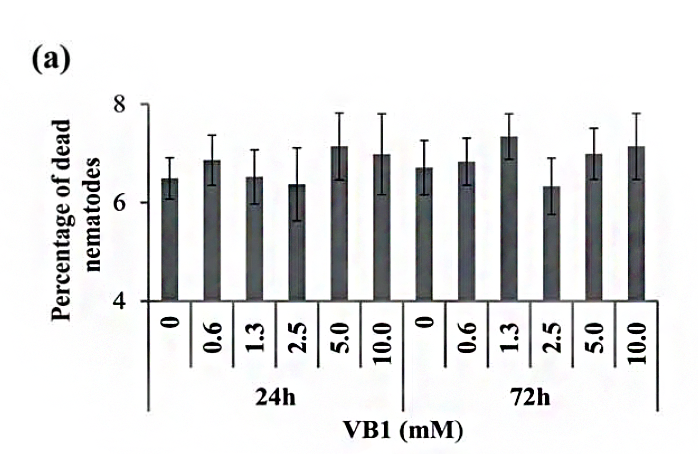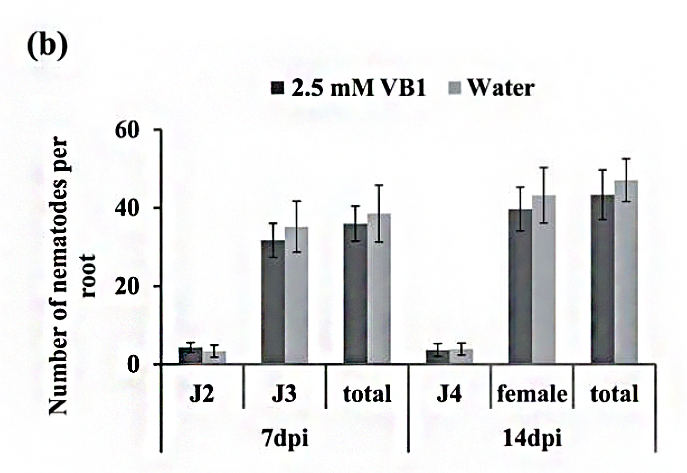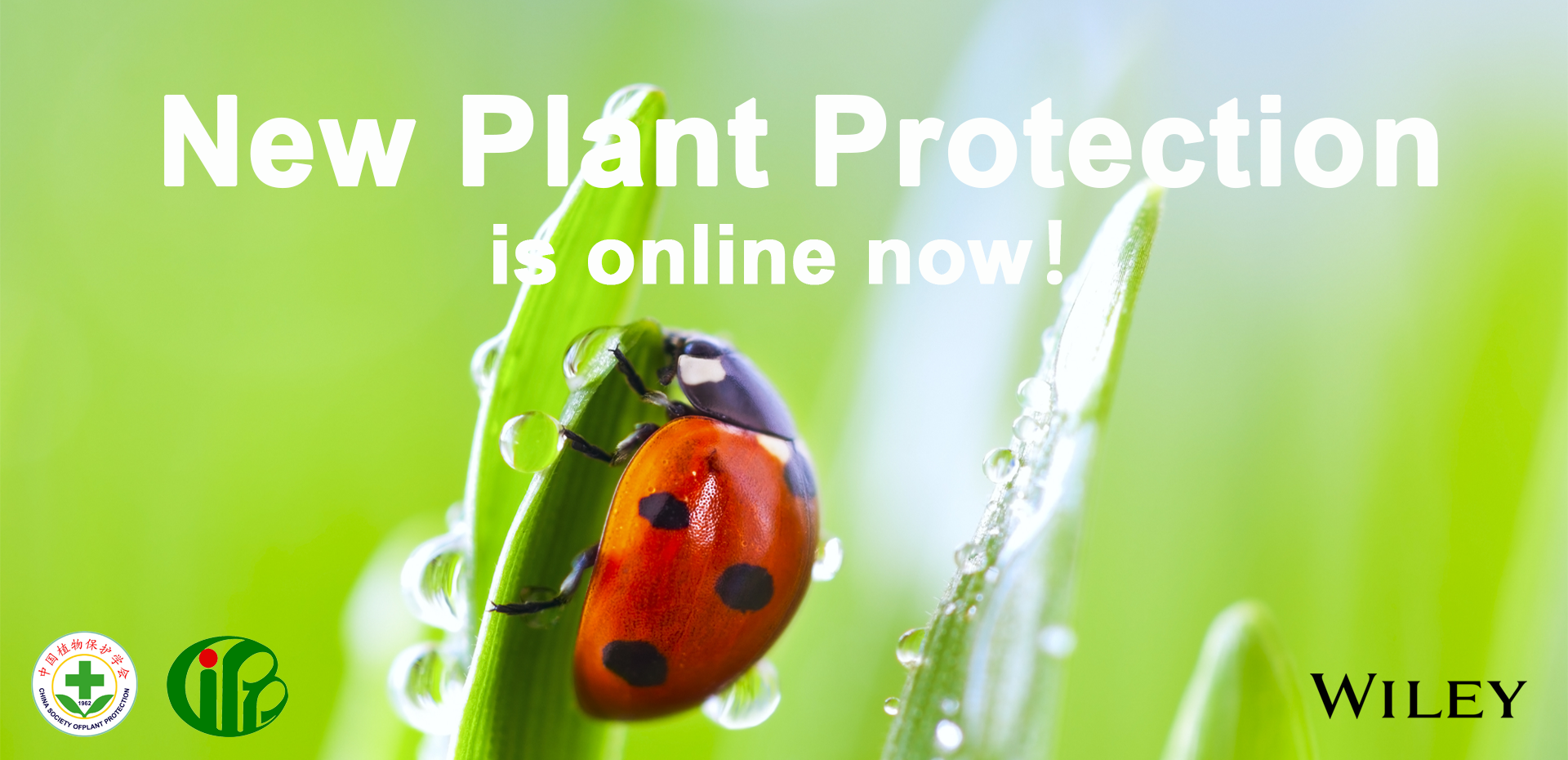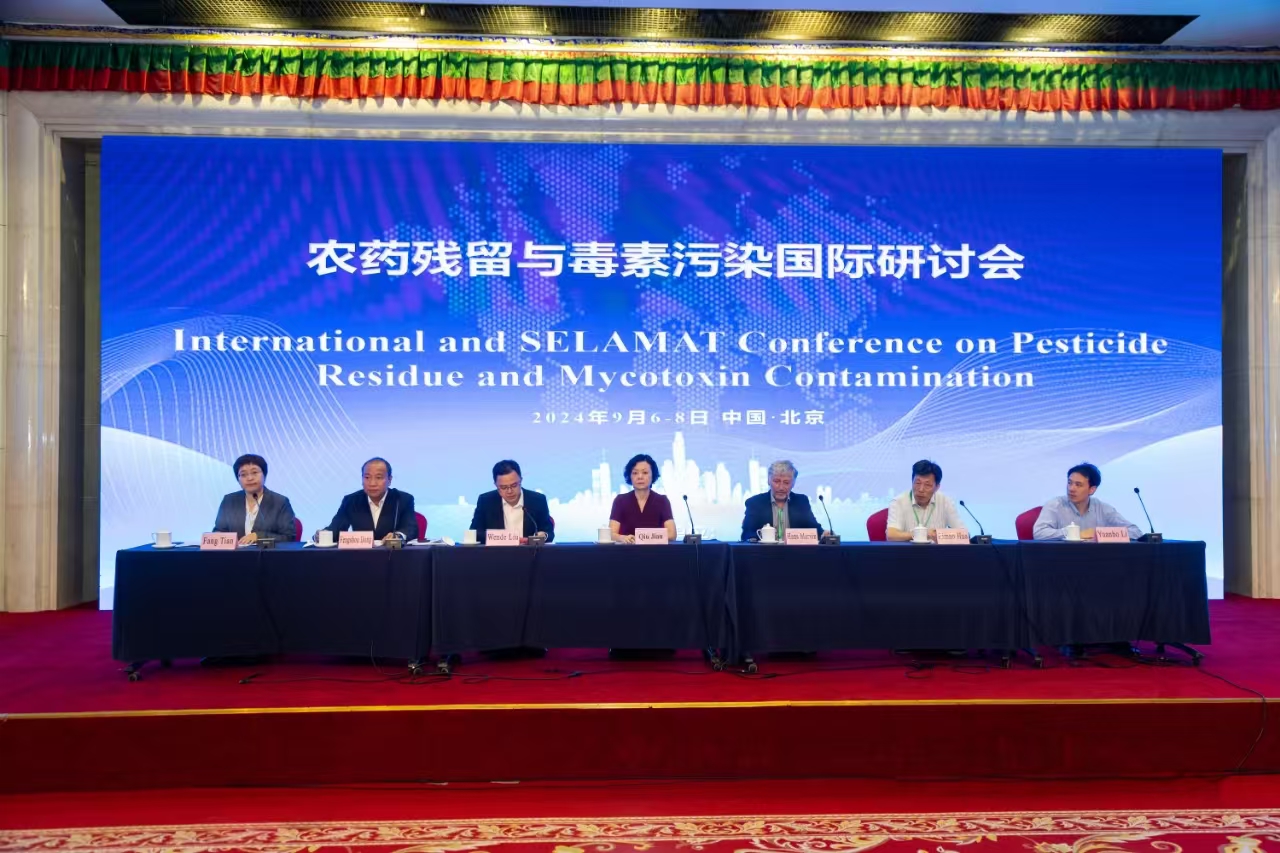Thiamine-induced priming against root-knot nematode infection inrice involves lignification and hydrogen peroxide generation
Thiamine (vitamin B1, VB1) can act as a plant defence trigger, or priming agent, leading to a rapid counterattack on pathogen invasion. Previous studies have verified that thiamine is a systemic, broad-spectrum, long-lasting resistance inducer to defense against fungi, bacteria and viruses in multiple plant species. Although thiamine has been found to induce resistance to different pathogens, the molecular mechanisms underlying this have not been completely elucidated, and nematode infection has not been tested previously. Recently, researchers at State Key Laboratory for Biology of Plant Diseases and Insect Pests, Institute of Plant Protection of CAAS published a cover paper about VB1 induced priming against root-knot nematode infection in rice in Molecular Plant Pathology.



Effect of thiamine soaking on nematode viability and infectivity
They evaluated the priming effect of thiamine on rice (Oryza sativa cv. Nipponbare) and its activity against root-knot nematode (Meloidogyne graminicola) infection. They found that thiamine treatment and subsequent nematode inoculation activated hydrogen peroxide (H2O2) accumulation and lignin deposition in plant roots, and this correlated with enhanced transcription of OsPAL1 and OsC4H, two genes involved in the phenylpropanoid pathway. The number of nematodes in rice roots was slightly but significantly reduced, and the development of the nematodes was delayed, whereas no direct toxic effects of VB1 on nematode viability and infectivity were observed. The combined application of thiamine with L-2-aminooxy-3-phenylpropionic acid (AOPP), an inhibitor of phenylalanine ammonia-lyase (PAL), significantly hampered theVB1-priming capacity. These findings indicate that thiamine induced priming in rice involves H2O2 and phenylpropanoid mediated lignin production, which hampers nematode infection. Further cellular and molecular studies on the mechanism of thiamine-induced defence will be useful for the development of novel nematode control strategies.
More details are available on the bellow links:
http://onlinelibrary.wiley.com/doi/10.1111/mpp.12316/pdf
-
 China-Laos Training Workshop on Integrated Management of Destructive Crop Pests and Diseases Successfully held in Laos
China-Laos Training Workshop on Integrated Management of Destructive Crop Pests and Diseases Successfully held in Laos -
 New Plant Protection: New challenge and new opportunity for plant protection
New Plant Protection: New challenge and new opportunity for plant protection -
 International and SELAMAT Conference on Pesticide Residue and Mycotoxin Contamination Held in Beijing
International and SELAMAT Conference on Pesticide Residue and Mycotoxin Contamination Held in Beijing -
 CAAS President Meets Chairman of ASEAN FAW Taskforce
CAAS President Meets Chairman of ASEAN FAW Taskforce
